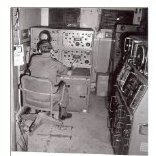Solar and wind energy in thailand
-
Recently Browsing 0 members
- No registered users viewing this page.
-
Topics
-
-
Popular Contributors
-
-
Latest posts...
-
12
Report Taiwanese Traveler Caught with $210,000 in Gold at Hanoi Airport
I found that odd too. -
8
Tm30 questions
You have to search for the entry you made within 7 days of making it. When you find it, there is a button to generate a pdf. After 7 days you can no longer find it through the search function, and would have to submit a new TM30. -
201
Krungsri online banking discontinued from 1 October 2025
I believe this may be Krungsri bank branch specific and YMMV (your mileage may vary). My wife contacted our local branch of Krungsri. They stated there was no point to use Krungsri Biz online, as that too would have it online closed in the relatively near future. Frankly - I don't believe that. But according to what my wife was told by the Krungsri rep, it is Bank of Thailand recent policy for all banks to have their computer based online banking (ie access via laptop.desktop computer) to be closed, while banking via the bank's smartphone apps, will continue. Again, according to that (which as noted I am skeptical) ALL banks will be, sometime in the future, closing their online computer based banking (but not their smartphone banking). Did I say I was skeptical? Reference the age-71 limitation. She was advised that indeed those age-71 and older could not activate smartphone if activating a Krungri smartphone app for the first time. But she was also told existing users of the Krungsri app could continue using their app. My wife also claimed she she was told that for existing users, age-71 and older, moving their app from an old to a new phone would not be an issue - but here I don't yet believe my wife ... lol !! ... my wife was 'fuzzy' in her reply and my experience is when that occurs, she is making up her own answer as to what the bank actually stated. And I have learned from experience, that unless absolutely necessary, not to press my wife on such things. If i want to find out for certain the approach of the branch of Krungsri where I bank, I will likely have to go to the bank in person, find a good English language speaker, and ask myself. Anyway - I came away with the view point - that quite possibly different branches of Krungsri bank will have different policies on the details of this topic. -
4
Crime Vietnamese Man Arrested at Suvarnabhumi Airport for Using Fake Documents to Work Illegally
Why not name the agent? -
23
Ukraine Russia Presses Toward Pokrovsk with 110,000 Troops Amid Stalemate, Kyiv Warns
On the contrary. Look at what the Trump administration did today: They really don't care about Ukraine at all. I'm sick to my stomach by this administration. -
328
Immigration Thailand Digital Arrival Card. TDAC
No reports of this being needed yet. It will likely be required in the future, at least your TDAC number, but as of now it's not required.- 1
-

-
-
Popular in The Pub








.thumb.jpeg.d2d19a66404642fd9ff62d6262fd153e.jpeg)





Recommended Posts
Create an account or sign in to comment
You need to be a member in order to leave a comment
Create an account
Sign up for a new account in our community. It's easy!
Register a new accountSign in
Already have an account? Sign in here.
Sign In Now